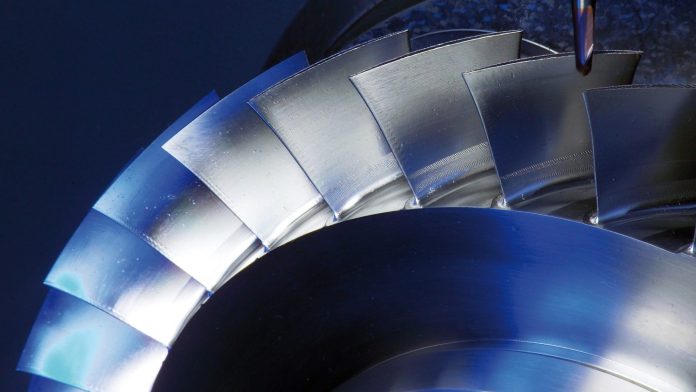Telecoms vendor Ericsson and the Fraunhofer Institute for Production Technology have joined together to explore and develop industrial applications of 5G, including the production of components for jet engines. The 5G trial system, supplied by Ericsson for the work, has achieved latency of close to one millisecond, the pair said, making it possible to control manufacturing machines in near real-time.
At Hannover Messe this week, the pair are showing how industrial 5G connectivity can be used control the production of so-called blade integrated disks (blisks) for German aircraft engine manufacturer MTU Aero Engines. The disk and blades are produced as a single piece, milled out of solid pieces of metal and have extremely high requirements towards accuracy and surface integrity. They serve the purpose of compressing the air inside jet engines.
Thomas Dautl, director of manufacturing technology at MTU Aero Engines, said: “A blade-integrated disk is a high-value component. The milling process takes 15-20 hours and the total lead time is around three-to-four months, including coating processes and quality checks. The new 5G-based production technology will help make our operations more efficient.”
Applying 5G, with its low latency and high cost, will improve costs, quality, and flexibility for manufacturers. The 5G-enabled blisk case alone can save a single factory approximately €27 million, and up to €360 million globally, according to a report from Ericsson. From a sustainability perspective, CO2 emissions from both their production and operation in jet engines can be reduced by some 16 million tons annually on a global basis.
Machines can be equipped with industrial 5G sensors where fixed connections cannot be installed, and production lines can be adapted to new requirements in a fraction of a second, said Ericsson
Ericsson’s industrial 5G trial system, operating in the 3.5GHz band, is connected to an acceleration sensor mounted directly on the blisk in the production machinery. The vibration spectrum is transmitted in real time via 5G to the evaluation system. The very low latency helps correlate the vibration to the tool’s position and enable prompt adjustment of production processes.
Thomas Bergs, managing director at the Fraunhofer Institute for Production Technology, said: “Many of our partners are planning to implement 5G on their manufacturing sites and see a great potential in having this technology in place. It will help the companies to become more competitive and profitable.”
Arun Bansal, senior vice president and head of Europe and Latin America at Ericsson, said: “We are running 5G industry programmes in Europe, North America and Asia. There is a strong demand from industries for 5G technology and together we can boost productivity and create new business opportunities. The Blisk project is a perfect example of what is possible in the industrial context with 5G in the future. Ultra-low latency of 5G makes this industrial use case feasible.”
Smart factory showcases have been in abudance at Hannover Messe this week, with major announcements from Deutsche Telekom, Bosch and ABB.

